NASA’s Roman Telescope Prepares to Solve the Mysteries of the Universe
![]()
NASA’s Nancy Grace Roman Space Telescope (NGRST or Roman) will feature two primary instruments, a 300.8-megapixel infrared Wide Field Instrument (WFI) and a Coronagraph designed for studying faint objects, when it launches in 2027. The NASA Goddard team recently installed a vital subsystem for the space telescope’s Wide Field Instrument.
NASA Goddard Team Engineers and Installs Vital Subsystem for Roman in Record Time
The Simplified Relative Calibration System (sRCS) subsystem was recently devliered to Ball Aerospace in Boulder, Colorado, where engineers integrated the sRCS into the WFI’s Cold Sensing Module. The component will enable astronomers to “measure the total light output of cosmic objects like galaxies and supernovae with extreme accuracy,” NASA explains.
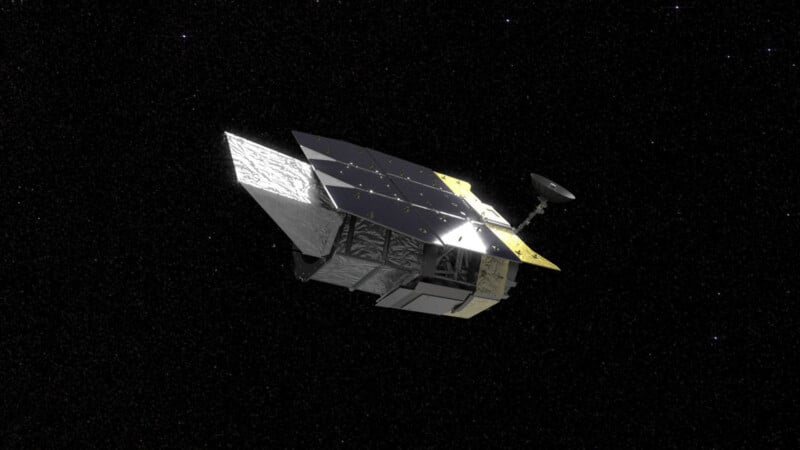
When Roman launches by May of 2027, scientists will use Roman’s data to “unravel the secrets of dark energy and dark matter, discover exoplanets, and explore many topics in infrared astrophysics.”
“Without this calibration tool, we wouldn’t be able to gather accurate enough measurements to achieve the next-level science Roman is designed to do,” says Joshua Schlieder, a research astrophysicist at NASA’s Goddard Space Flight Center in Maryland.
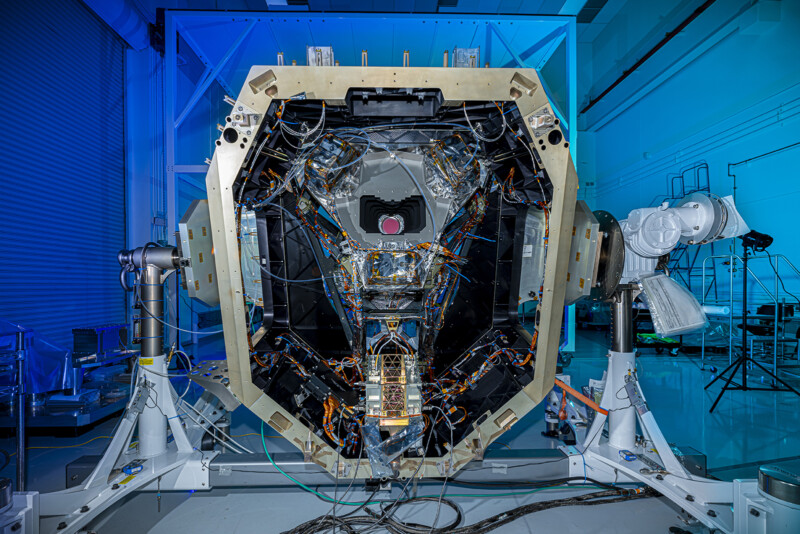
Initially, the Roman team planned to use a different version of the sRCS. However, there were prevailing concerns about whether that alternative sRCS would be ready in time and be up to the standards required for the Roman mission. Amid these worries, engineers at Goddard suggested a novel approach.
With some components from the original sRCS, the engineers redesigned, built, and tested the new sRCS in about a year and a half, significantly faster than the “several years” usually required for such an undertaking.
“This incredible feat was only made possible by pulling in extraordinary engineers and scientists from various disciplines who exemplify the teamwork and dedication that NASA prides itself in,” says Hali Flores, the sRCS product development lead at Goddard.
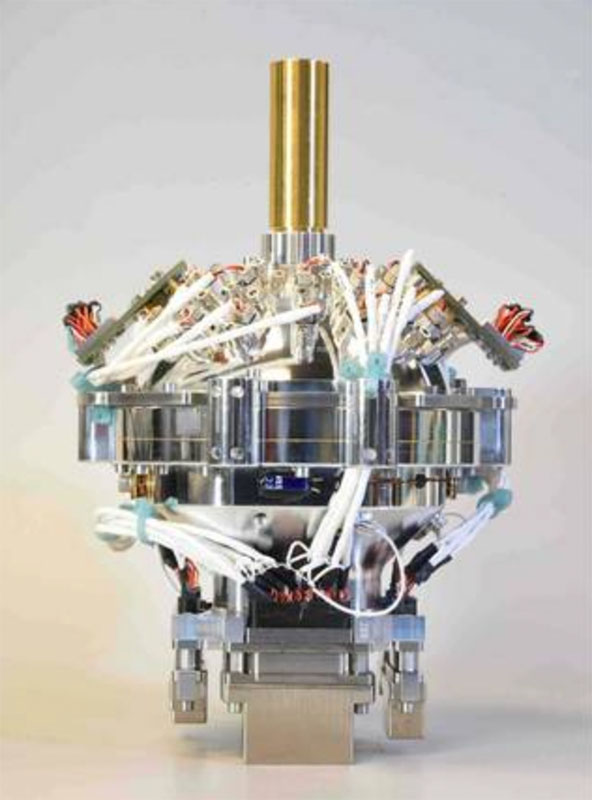
While NASA’s Hubble Space Telescope and James Webb Space Telescope are currently stunning astronomers and the general public with incredible imagery from space, the impressive work of the Roman team highlights how much time and energy are dedicated to telescopes many years before they launch and wow people with photos.
Components such as the sRCS are vital to Roman’s eventual imagery. The sRCS will reduce uncertainty in Roman’s measurements and enable Roman’s detectors to measure the relative brightness of celestial objects to roughly 0.1 percent accuracy, even when objects “differ in brightness by a factor of 100,000.”
“The sRCS helps scientists understand exactly how our detectors respond to the light from the objects we observe — particularly how that response varies with the color or brightness of the light. The ability to do this on-orbit with this accuracy is unique to Roman, and is core to achieve our science objectives,” says Jackie Townsend, Roman’s deputy project manager at Goddard.
The Instruments Roman Will Use to Achieve its Mission to Address Essential Questions about Dark Energy, Exoplanets, and Infrared Celestial Objects
As NASA explains, Roman’s mission is to address essential questions concerning dark energy, exoplanets, and infrared astrophysics. Over the course of Roman’s mission lifetime, it will “perform a microlensing survey of the inner Milky Way to find ~2,500 exoplanets” and measure light from “a billion galaxies.”
Roman’s Wide Field Instrument promises to capture an area roughly 300 times greater than Hubble. Roman’s primary mirror is 2.4 meters in diameter (7.9 feet), the same size as Hubble’s primary mirror. Meanwhile, Webb’s primary mirror’s diameter is 6.5 meters (21.3 feet).
To learn more about dark energy, Roman’s Wide Field Instrument will map how matter is structured and distributed throughout the universe and measure the universe’s expansion. The Roman team will study galaxies as far back as half a billion years after the universe’s birth, about four percent of its current age.
“The Roman Space Telescope will do this through multiple observational strategies, including surveys of exploding stars called supernovae and galaxy clusters, and mapping out the distribution of galaxies in three dimensions. Measuring the brightness and distances of supernovae provided the first evidence for the presence of dark energy. The Roman Space Telescope will extend these studies to greater distances to measure how dark energy’s influence increased over time,” NASA explains.
Roman’s Coronagraph instrument will image exoplanets by blocking starlight, allowing fainter planets to be discovered and observed. It will be NASA’s first advanced coronagraph in space, promising performance 1,000 times greater than any previously flown.
NASA Simulates Roman’s Power with ‘Gargantuan Synthetic Survey’ Showing 33 Million Galaxies
While still a few years from launch, NASA recently simulated images to show what scientists can expect from Roman.
The “gargantuan synthetic survey” shows about 33 million galaxies, along with 200,000 foreground stars, despite representing just one percent of Roman’s planned survey.
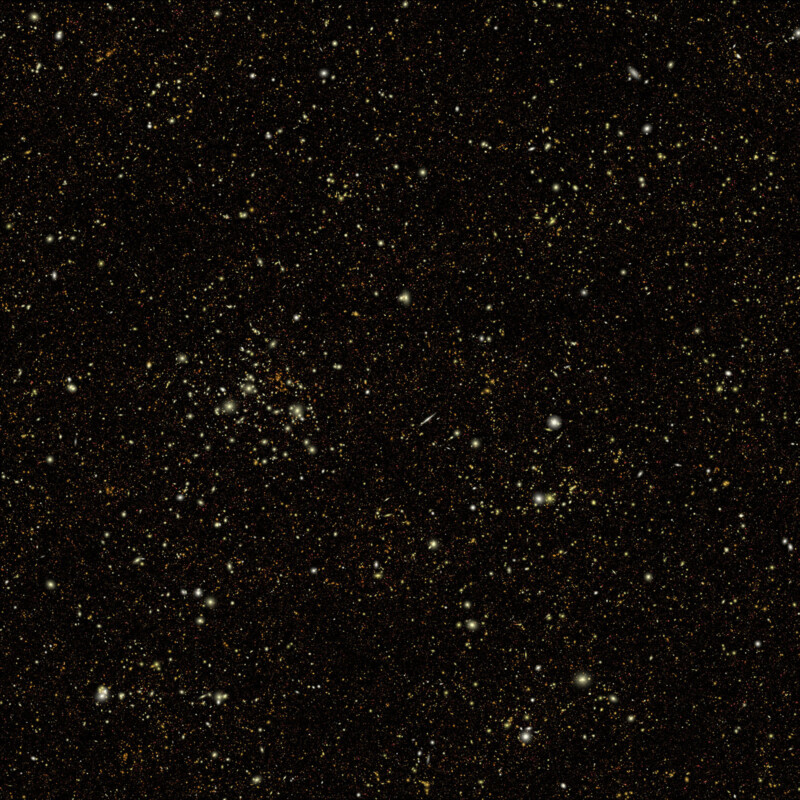
Credits: M. Troxel and Caltech-IPAC/R. Hurt
The simulation helps scientists plan observation strategies for when Roman launches and test different methods for gathering and processing the immense amount of data Roman will produce.
“The volume of data Roman will return is unprecedented for a space telescope. Our simulation is a testing ground we can use to make sure we will get the most out of the mission’s observations,” says Michael Troxel, an assistant professor of physics at Duke University.
The team drew data from a mock universe developed initially to support science planning for the Vera C. Rubin Observatory in Chile. Since the Roman and Rubin simulations rely upon the same data, astronomers should be able to compare them and learn more about how to potentially combine each telescope’s observations, as both Roman and Rubin will actively scan the universe, albeit from very different perspectives.

“Roman’s High Latitude Wide Area Survey will consist of both imaging — the focus of the new simulation — and spectroscopy across the same enormous swath of the universe. Spectroscopy involves measuring the intensity of light from cosmic objects at different wavelengths, while Roman’s imaging will reveal precise positions and shapes of hundreds of millions of faint galaxies that will be used to map dark matter. Although this mysterious substance is invisible, astronomers can infer its presence by observing its effects on regular matter,” explains NASA.
Any object with mass affects the fabric of space-time. The more massive an object, the greater its effect and the more it warps everything around it. Massive objects also affect how light from behind it travels through space, an effect called gravitational lensing. Scientists can use this interaction to learn more about the nature of celestial objects, even ones that can’t be seen, like dark matter.
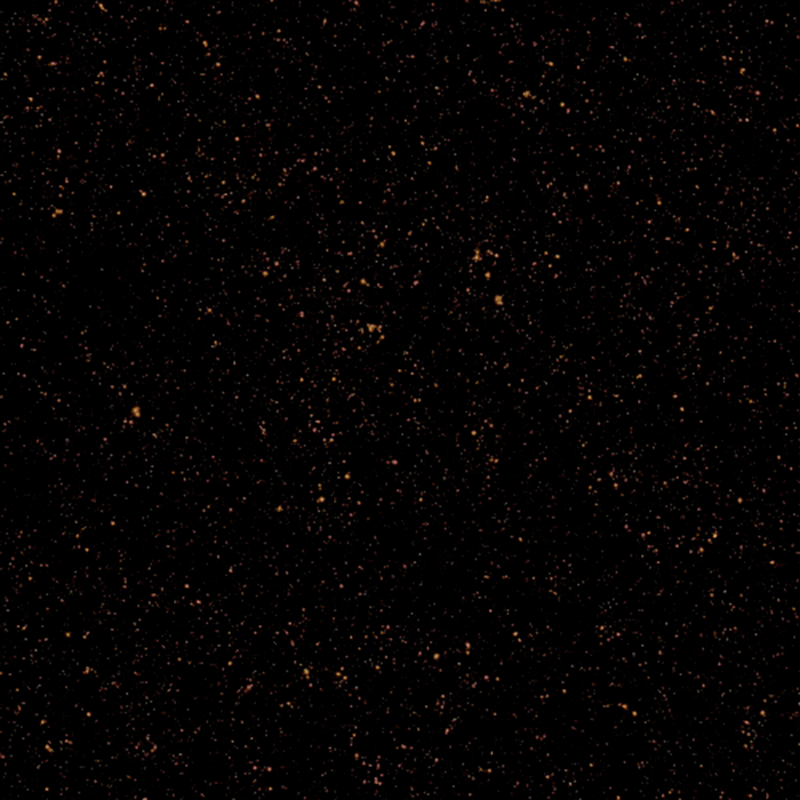
Roman’s instruments promise enough precision to measure even weak lensing and see how “clumps of dark matter warp the appearance of distant galaxies.” By observing the lensing effects, researchers will expand humanity’s understanding of dark matter.
The team’s synthetic Roman survey covers about 20 square degrees of the sky — about 95 full moons. The real survey will be 100 times larger. Rubin will scan an even larger area, nearly half the entire sky, albeit with lower resolution because the ground-based telescope must peer through Earth’s turbulent atmosphere. PetaPixel recently wrote about how artificial intelligence may help improve the performance of ground-based telescopes like Rubin.
The Future is Bright for Roman’s Pursuit of Faint and Invisible Celestial Objects
“With Roman’s colossal cosmic view, astronomers will be able to accomplish far more than the survey’s primary goals, which are to study the structure and evolution of the universe, map dark matter, and discern between the leading theories that attempt to explain why the expansion of the universe is speeding up. Scientists can comb through the new simulated Roman data to get a taste of the bonus science that will come from seeing so much of the universe in such exquisite detail,” NASA says.
If Roman’s synthetic survey is any indication, 2027 will kickstart an incredible period of discovery for scientists. Webb has already shaken current cosmological theory, and Roman may very well prove to be just as disruptive of a force.
Image credits: NASA, with individual attributions beneath each image.